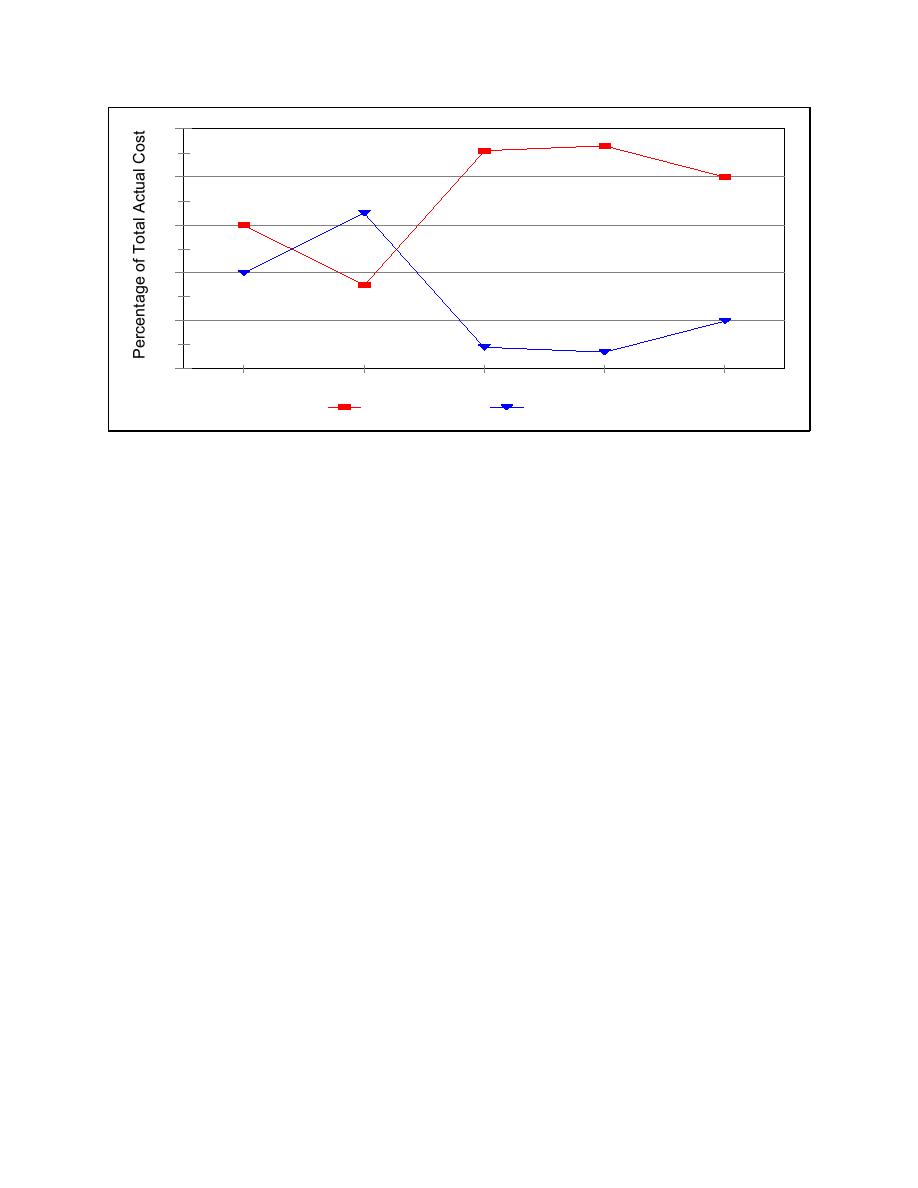
EM 1110-2-1100 (Part I)
30 Apr 02
100
93
91
80
80
65
60
60
40
40
35
20
20
9
7
0
1950s
1960s
1970s
1980s
1990s
Beach Nourishment
Structures
Figure I-3-13. The shift from fixed structures to beach restoration and nourishment (from Hillyer 1996)
l. The Coastal Engineering Research Center and the Coastal Engineering Research Board. In 1962,
the USACE studied the merits of strengthening its coastal engineering research capabilities and the benefits
from having the evaluation and reporting of coastal projects follow the same procedures as river, harbor, and
flood control investigations. Responding to the recommendations of the Corps' internal study board,
Congress, by approving Public Law 172 on November 7,1963, abolished the BEB and established the Coastal
Engineering Research Center (CERC). CERC had the same mission as the BEB less its review function, but
retained an advisory system in a "Board on Coastal Engineering Research, constituted by the Chief of
Engineers in the same manner as the present Beach Erosion Board" (Moore and Moore 1991).
(1) Early years. The Coastal Engineering Research Board (CERB) and CERC followed the lead of their
predecessor, the BEB, in pursuing field measurements and basic coastal processes research. The argument
was that more research would produce more data, provide for more sound coastal engineering approaches,
and lead to greater savings. Spurred by both increasing development and environmental awareness, CERC
planned programs to quantify phenomena that previously had been only understood qualitatively. The Marine
Science Council, created by the Marine Resources and Engineering Development Act of 1966, appointed the
USACE as coordinating agency in a multidisciplinary, interagency effort to identify the effects of
construction on the coastal zone. That same year, USACE Headquarters (HQUSACE) asked CERC to draft
a program covering the Corps' long range needs in coastal engineering. This triggered a reevaluation and
a program increase between 1964 and 1969 (Moore and Moore 1991).
(2) Fort Belvoir. As CERC assumed new missions, its most critical needs were office space and a shelter
for the Shore Processes Test Basin (SPTB). Weather conditions limited the open-air SPTB use to the period
April through October. A HQUSACE command inspection of CERC in December, 1967, concluded that
there was not enough space at the Dalecarlia site for the future CERC. A plan was developed to build a
research and development complex in the northwest corner of Fort Belvoir on 182 hectares (450 acres).
Several USACE and Department of Army agencies would be located at the complex. CERC, the Board of
Engineers for Rivers and Harbors, and the Institute for Water Resources would be located in the Kingman
Building. CERC was allocated 40.5 hectares (100 acres) for the replacement of existing test facilities and
future expansion.
I-3-22
History of Coastal Engineering


 Previous Page
Previous Page
